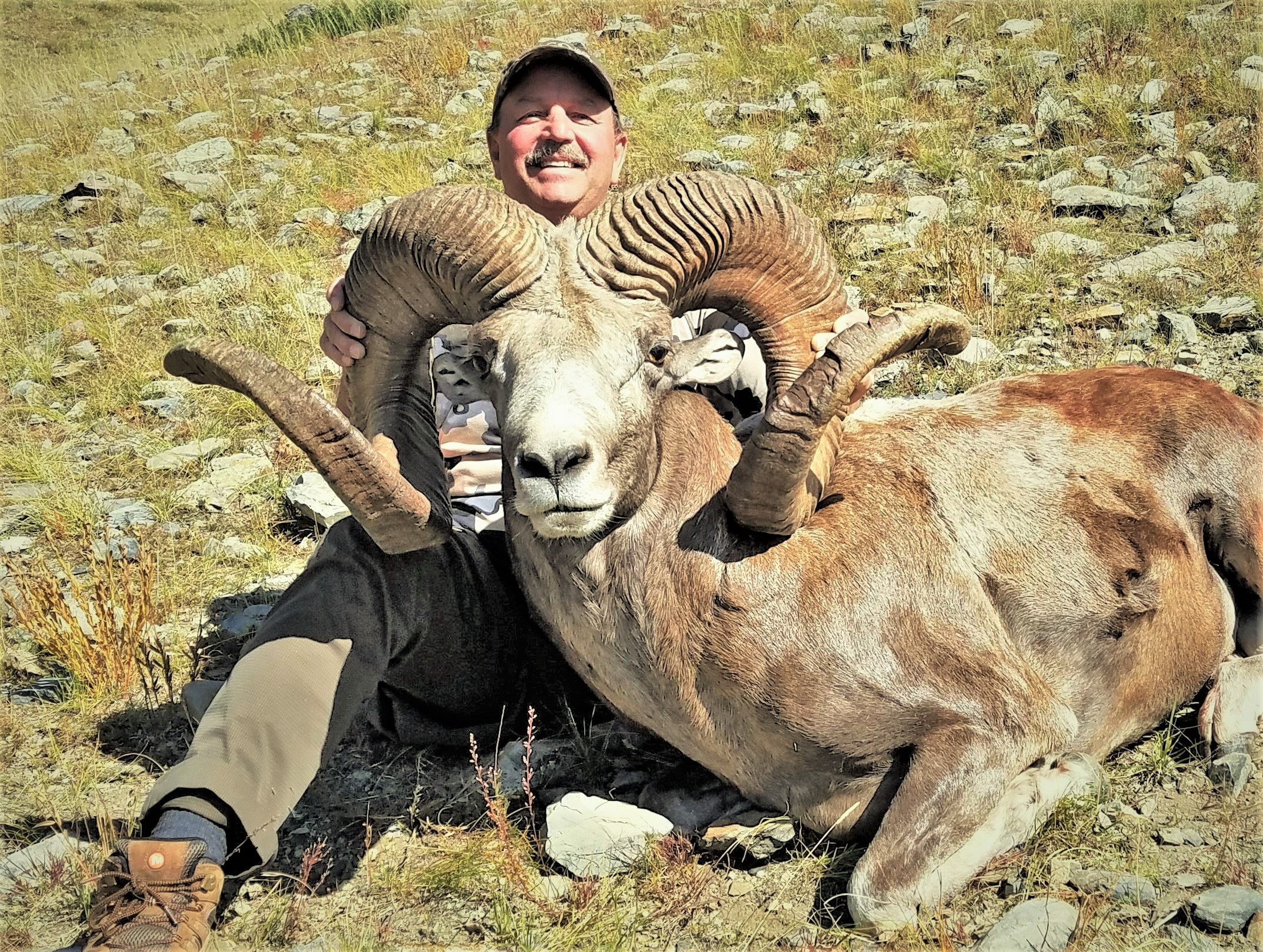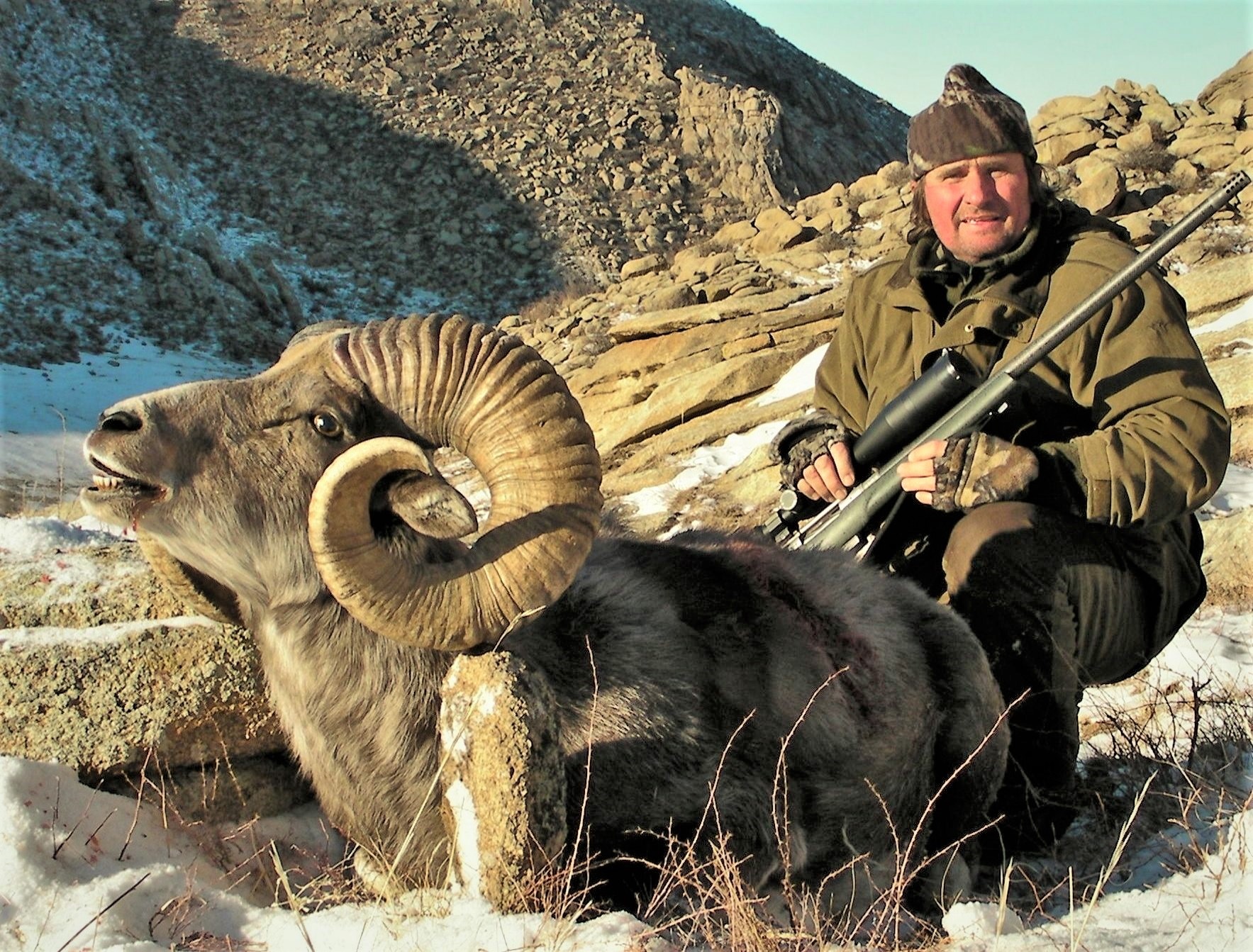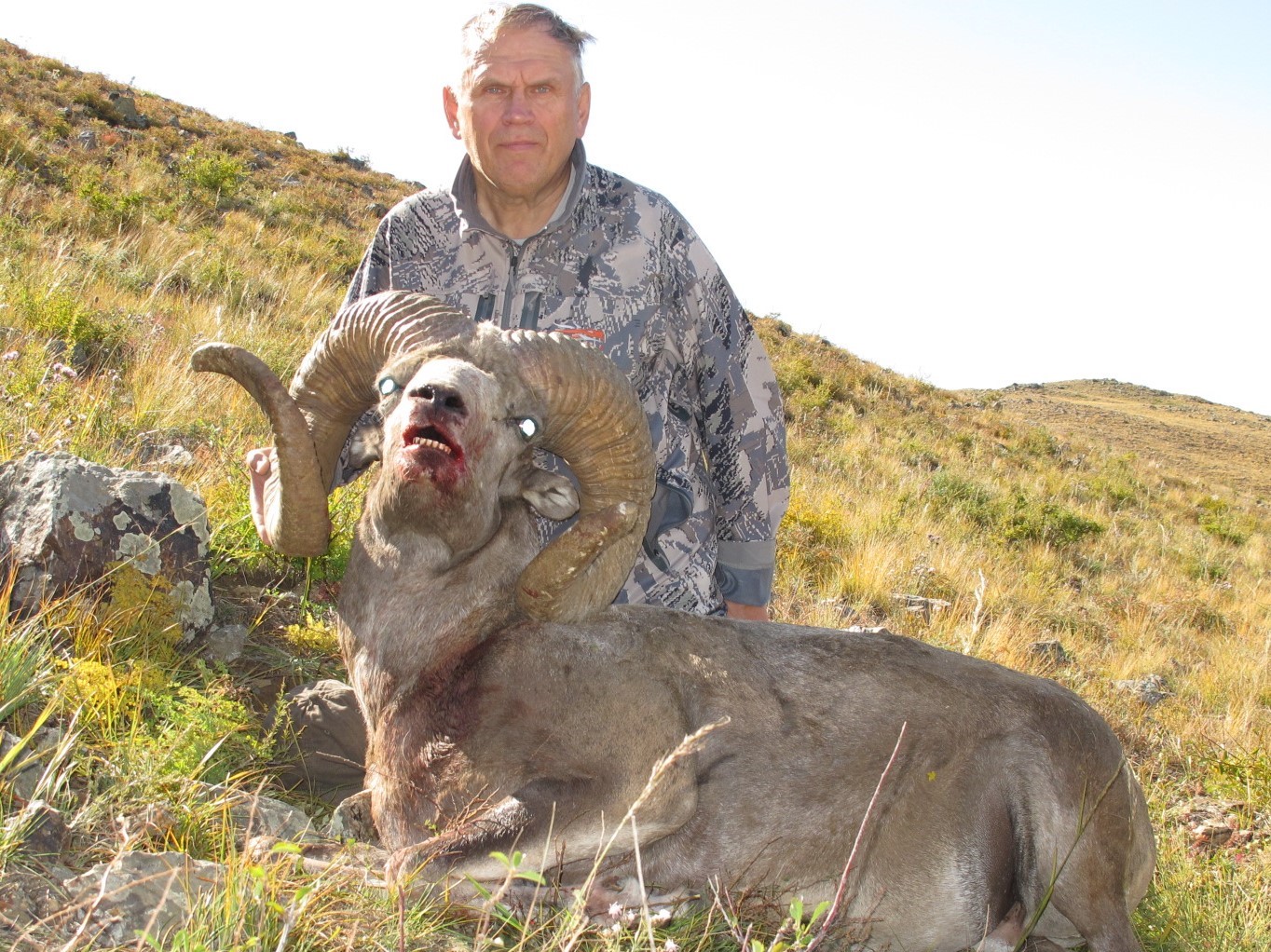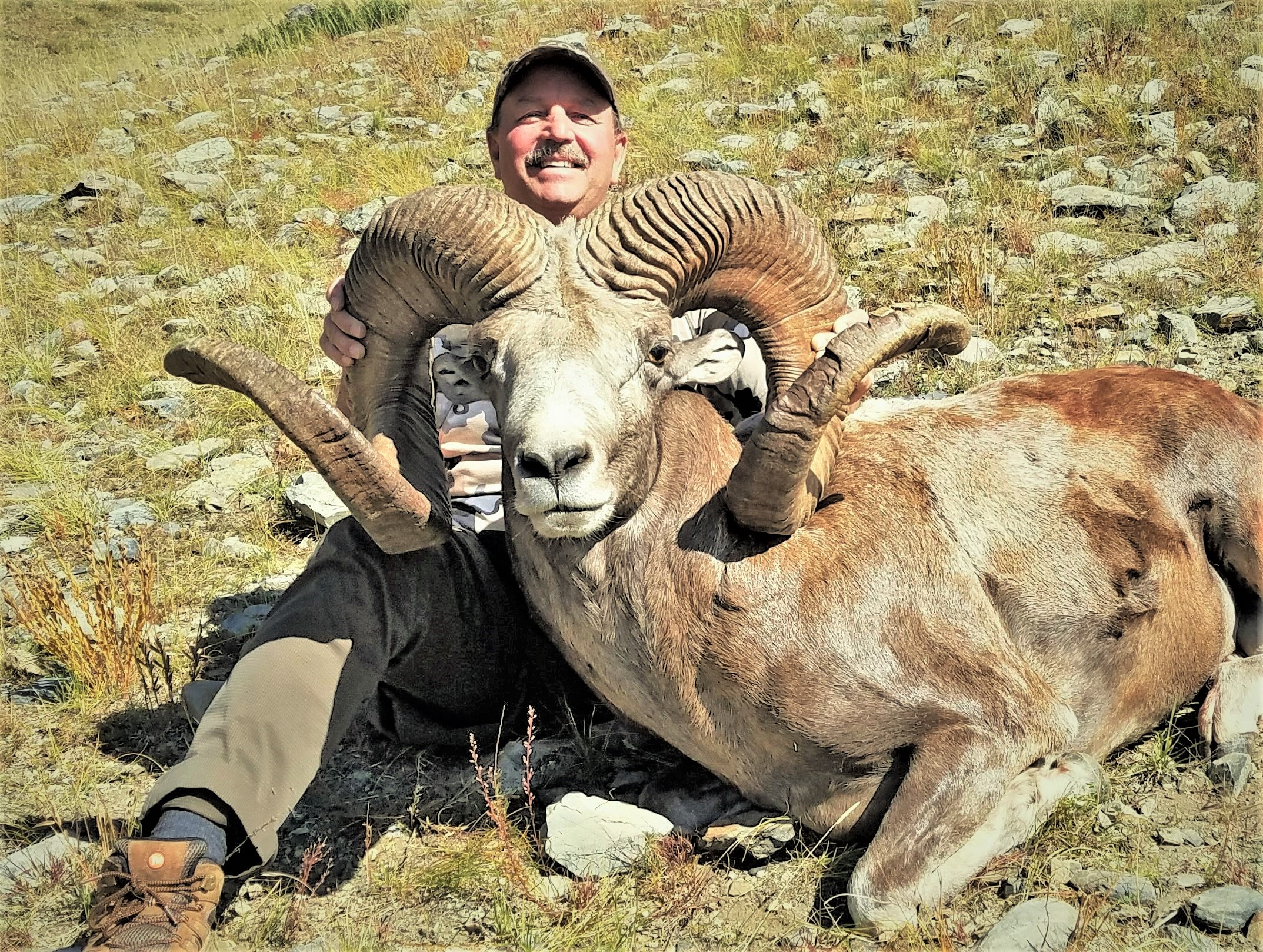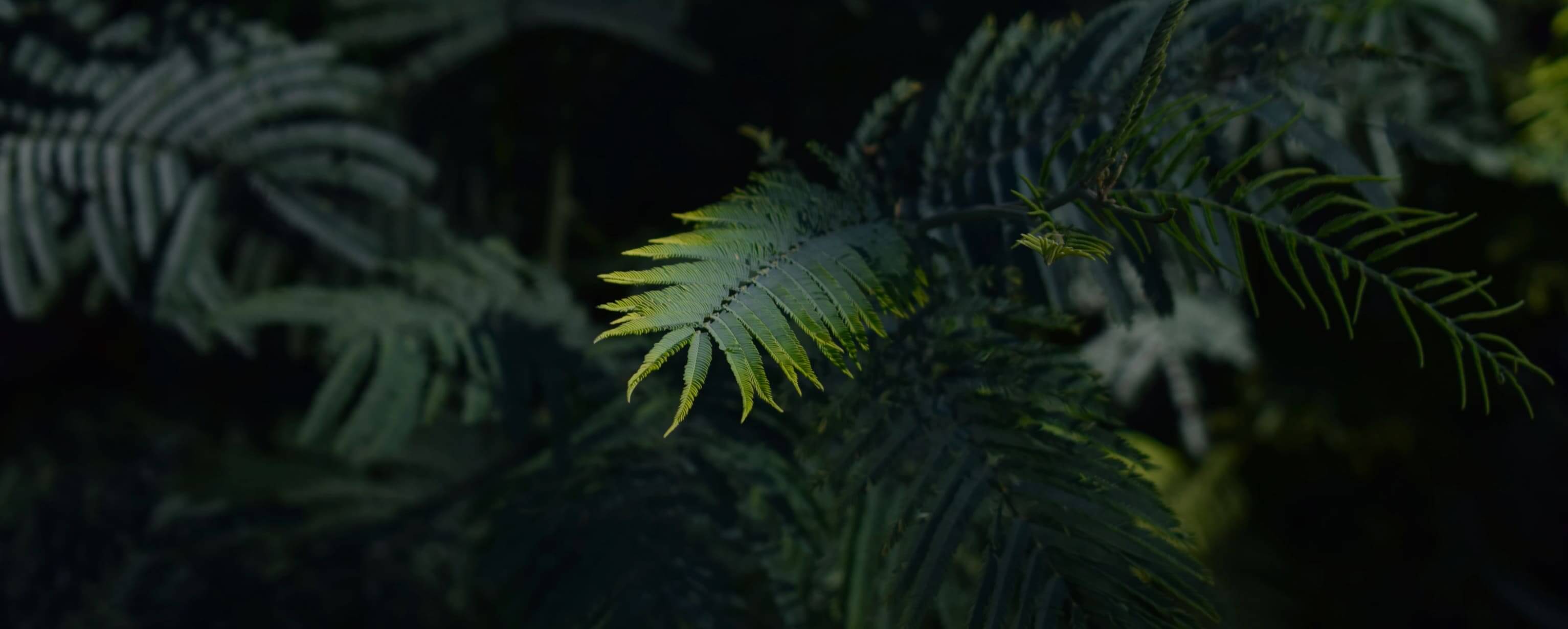HANGAI ARGALI
SEASON: The legal revisions made in 2012 significantly changed the management of nearly all aspects of the trophy hunting system in Mongolia. With the new revisions, hunting season for argali was shifted to a time frame between July 1 – September 30. The revised 2012 system allows only 3 months of hunting which does not include the rutting period in November.
AREA: The Hangai Mountains form a solid mountain mass in the central part of Mongolia and are the largest of the three major mountain ranges in Mongolia. It extends 800 kilometers from the west to the east. Characteristic feature of this area is the gentle rolling hills often covered with fine pastures. With this, the landscape in this part of the country differs greatly from the Altai Mountains that is home to the largest of the wild sheep, the Atai argali or Ovis ammon ammon. While high rocky clifs and deep basins are dominant in Mongol Altai, Hangai range is featured by broad, warped dome-shaped mountains covered with grass which makes hunting much easier.
HOW TO GET THERE: Hunters are required to fly into the capitol city Ulaanbaatar, known as UB. They will be met by our representative at the airport and be asssited for the rifle clearance at the customs. This is a 10-15 minute procedure in general. Since we hunt several different areas for Hangai argali, the transfer to the area within the country varies greatly. Whle some areas can be reached by a 4-5 hour car ride from UB, others require a domestic flight which may take around 1,5 – 2 hours. Then, there will be a 3-5 hour ride on asphalt and dirt roads to get to camp.
ACCOMMODATION: Circular felt tents with a wooden frame which are called “yurts” or “ger” are utilised to accommodate hunters. These well insulated tents are the traditional home for the Mongolian nomads and even in extereme weather they prove to be very comfortable and serviable.
Most yurts are furnished with a wood-burning iron stove in the middle and a comfortable bed. Yurts are ideally suited to Mongolian steppe biomme. The circular shape of yurts makes them able to resist winds from any direction and also allows them to be easily and efficiently heated and cooled. Argali hunting camps are typically consist of a number of these dome-shaped traditional gers.
Almost all hunting camps across Mongolia are equipped with a small generator and electricy is produced by these devices. The power supply and the types of power outlets may differ between countries as there is no international standard. The power supply in Mongolia is 220 volt. There is always a Professional cook in the camp and in some cases they prove to be very good.
WEATHER: The climate in Mongolia is unstable, so from year to year, there may be significant variations in temperature and precipitation. The climate is strongly continental, with long, frigid winters and short, warm summers. The temperature range between winter and summer is definitely wide. Because the country is so far removed from the regulating influence of any oceans, the continental Mongolia climate brings great extremes in weather.
Warm and mostly dry weather can be expected in July with some thunderstorm. July is the hottest month of the year for Mongolians. The day temperature vary between 15°C to 22°C in the mountainous areas. Overall temperature in August is warm enough although later part of the month sees cooler temperatures and more rain or even snow.
By mid September the weather in Mongolia starts to cool but is far more predictable than in Spring time. Days can be sunny but the mountains start getting pretty chilly, even some snow fall can be observed.
ALTITUDE: The Hangai Mountains form a solid mountain mass in the central part of Mongolia and are the largest of the three major mountain ranges in Mongolia. It extends 800 kilometers from the west to the east. Characteristic feature of this area is the gentle rolling hills often covered with fine pastures. With this, the landscape in this part of the country differs greatly from the Altai Mountains that is home to the largest of the wild sheep, the Atai argali or Ovis ammon ammon. While high rocky clifs and deep basins are dominant in Mongol Altai, Hangai range is featured by broad, warped dome-shaped mountains covered with grass.
The high peaks in the Hangai range reach some 12,000 feet (3,700 metres), with Otgontenger, the highest, rising to some 13,200 feet (4,025 metres) in the northwest although the average elevation is anywhere between 8,000 – 10,000 feet (2500-3000 metres). Most hunts for Hangai argali are carried out at lower elevations at about 6,500 feet (2,000 metres).
DURATION of the HUNT: Our Hangai argali hunting organisations are for 10 days including the 2 days of traveling time. So actual hunting time is 7 days although almost all our hunts end much earlier.
HUNTING METHOD: The characteristic feature of the Hangai argali area is the gentle slopes and crests often covered with fine pastures which allows the use of four whell drive trucks extensively during the hunt. This gives the hunting party to cover more ground and check extended areas. This hunt can be classified as one of the less physical hunts when compared to most sheep hunting. Very little physicall activity is needed since the hunting is done by driving around in 4x4 wehicles and glassing occasionally to locate a desired size ram. For this reason comfortable Nissan and Toyota trucks are utilised extensively. Mountain basins are scanned for bands of sheep that are up and feeding or bedded down. Only the last stalk will be executed on foot.
“Vast” is a good place to start if only one adjective is needed to describe Mongolian wilderness. Our guides rely on their stalking ability and will try to get as close as close as to animals despite the vastness of the terrain. But in a terrain as wide open as Hangai mountains are, it may be a real challange at times. Then a barrel streching long shot may be in order.

